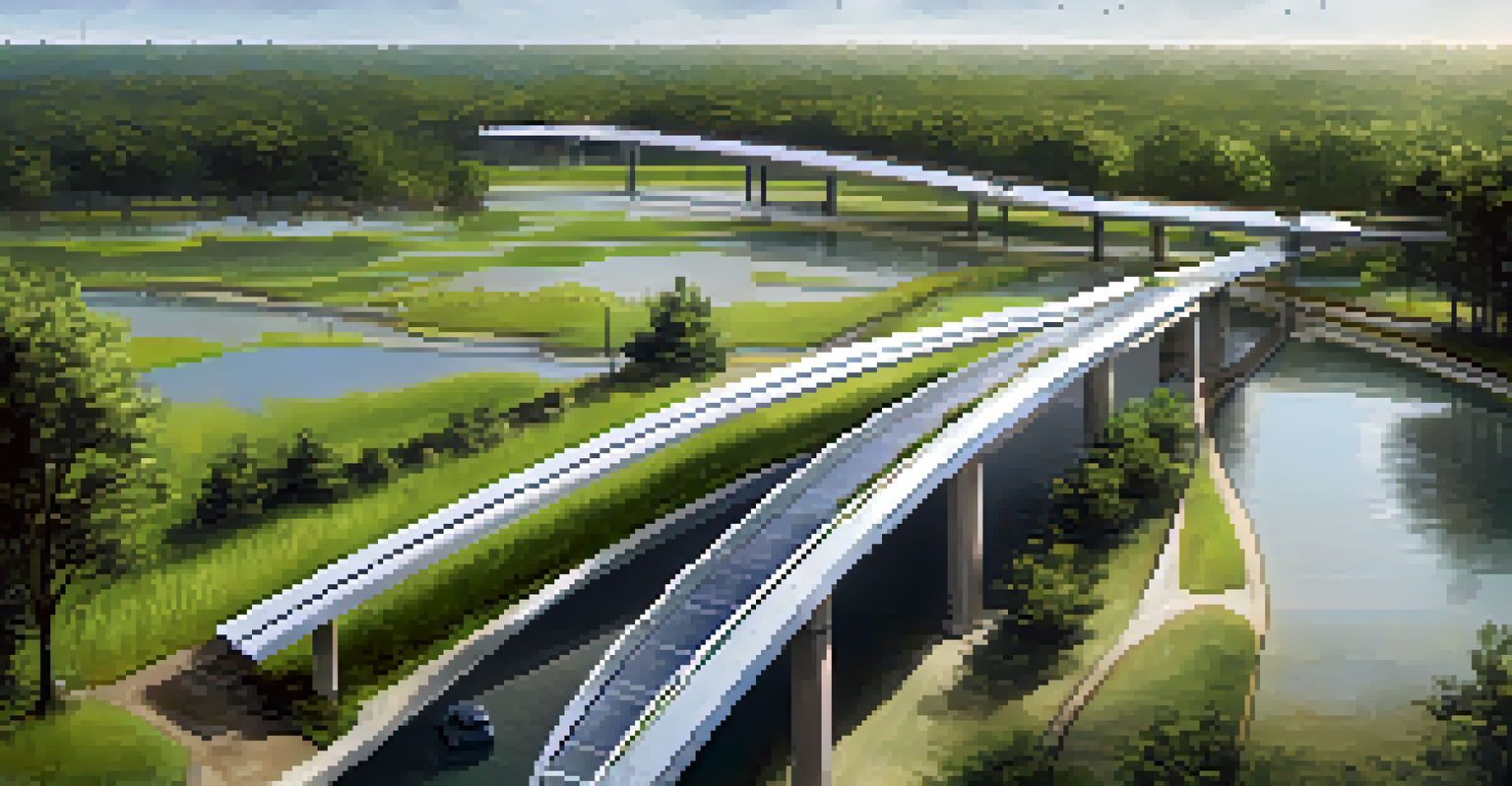Infrastructure Damage from Hurricanes in Louisiana

The Vulnerability of Louisiana's Infrastructure
Louisiana's unique geography makes it particularly susceptible to hurricanes. Nestled along the Gulf of Mexico, the state faces frequent storms that can wreak havoc on its infrastructure. From roads to bridges, the effects of strong winds and flooding can be devastating.
The greatest threat to our planet is the belief that someone else will save it.
Hurricane Katrina in 2005 serves as a stark reminder of this vulnerability. The storm's aftermath revealed significant weaknesses in the levee systems and road networks. Many residents were stranded, highlighting the urgent need for resilient infrastructure.
This vulnerability not only affects transportation but also crucial services such as electricity and water supply. As storms become more intense due to climate change, understanding these vulnerabilities is essential for future preparedness.
Historical Context of Hurricanes in Louisiana
Louisiana has a long history of hurricanes, with records dating back to the early 19th century. Each storm tells a story of resilience and adaptation, as communities learn from past experiences. However, the frequency and severity of these storms have increased in recent decades, raising concerns among residents and officials alike.

Hurricanes like Rita and Gustav demonstrated just how quickly infrastructure can be compromised. Essential systems, such as public transportation and emergency services, were often overwhelmed or rendered inoperable. This history underscores the need for continuous investment in infrastructure improvements.
Louisiana's Infrastructure Vulnerability
Louisiana's geography makes its infrastructure particularly vulnerable to hurricanes, as highlighted by the devastating impacts of storms like Hurricane Katrina.
As we assess the damage from past hurricanes, it becomes clear that proactive measures can save lives and resources. By understanding historical impacts, Louisiana can better prepare for future storms.
Economic Impact of Infrastructure Damage
Hurricane damage extends far beyond immediate destruction; it has lasting economic implications. When bridges, roads, and public utilities fail, the local economy suffers significantly. Businesses often face closures, and job losses follow, creating a ripple effect throughout the community.
Resilience is all about being able to overcome the unexpected. Sustainability is about survival.
For instance, the aftermath of Hurricane Katrina resulted in billions of dollars in economic losses. Many businesses were forced to shut down permanently, and recovery efforts took years. This economic toll highlights how critical infrastructure is to maintaining a thriving community.
Investing in robust infrastructure not only mitigates damage but also fosters economic growth. By creating a resilient framework, Louisiana can enhance its economic stability and reduce the long-term impacts of future hurricanes.
The Role of Government in Infrastructure Recovery
Government plays a crucial role in the recovery and rebuilding of damaged infrastructure. Following a hurricane, local, state, and federal agencies must collaborate to assess damage and allocate resources effectively. This coordinated response is vital in restoring normalcy for affected communities.
Programs like FEMA provide essential funding for rebuilding efforts, but the process can be slow and bureaucratic. Residents often find themselves waiting months or even years for assistance. This delay can add to the frustration and challenges faced during recovery.
Economic Toll of Hurricane Damage
The damage from hurricanes not only disrupts infrastructure but also leads to significant economic losses for local communities, as seen after Hurricane Katrina.
Ultimately, a transparent and efficient government response can significantly impact a community's ability to recover. By streamlining processes and prioritizing infrastructure, officials can help residents bounce back more quickly after a disaster.
Community Resilience and Local Involvement
Community resilience is a powerful tool in the face of hurricanes. Local residents often band together to support one another, sharing resources and knowledge. This grassroots effort can be as crucial as government response in rebuilding infrastructure.
For example, neighborhood organizations often mobilize quickly after a storm, providing food, shelter, and aid. Their commitment to helping each other fosters a sense of unity and strength that can lead to a faster recovery. Engaging local volunteers can also reduce the burden on official agencies.
Encouraging community involvement not only aids recovery but also promotes long-term resilience. When residents are actively involved, they gain a deeper understanding of their needs and how to address them in the future.
Innovative Solutions for Infrastructure Resilience
In recent years, innovative solutions have emerged to combat infrastructure challenges in Louisiana. From smart technologies that monitor structural integrity to eco-friendly materials, the focus is shifting towards creating resilient systems. These advancements aim to withstand the impacts of severe weather.
For instance, elevated roads and improved drainage systems can minimize flooding and damage during storms. Cities like New Orleans are investing in green infrastructure, such as wetlands restoration, to absorb excess water. These strategies not only protect infrastructure but also enhance the environment.
Community Involvement is Crucial
Local community resilience and involvement are essential for recovery and rebuilding efforts following hurricanes, often complementing government responses.
By embracing innovation, Louisiana can set an example for other vulnerable regions. The adoption of forward-thinking solutions can play a pivotal role in safeguarding infrastructure against the growing threat of hurricanes.
Looking Ahead: Future Challenges and Opportunities
As climate change continues to influence hurricane patterns, Louisiana faces both challenges and opportunities. Increased storm intensity poses a significant risk to infrastructure, necessitating ongoing investment and adaptation. Communities must remain vigilant and proactive in their preparedness efforts.
However, these challenges also present opportunities for growth and improvement. By prioritizing infrastructure resilience, Louisiana can strengthen its economy and enhance the quality of life for its residents. Collaboration among government, businesses, and communities is vital in this endeavor.

Looking ahead, the lessons learned from past hurricanes can guide future strategies. Emphasizing resilience, innovation, and community involvement will be crucial in navigating the complexities of a changing climate.